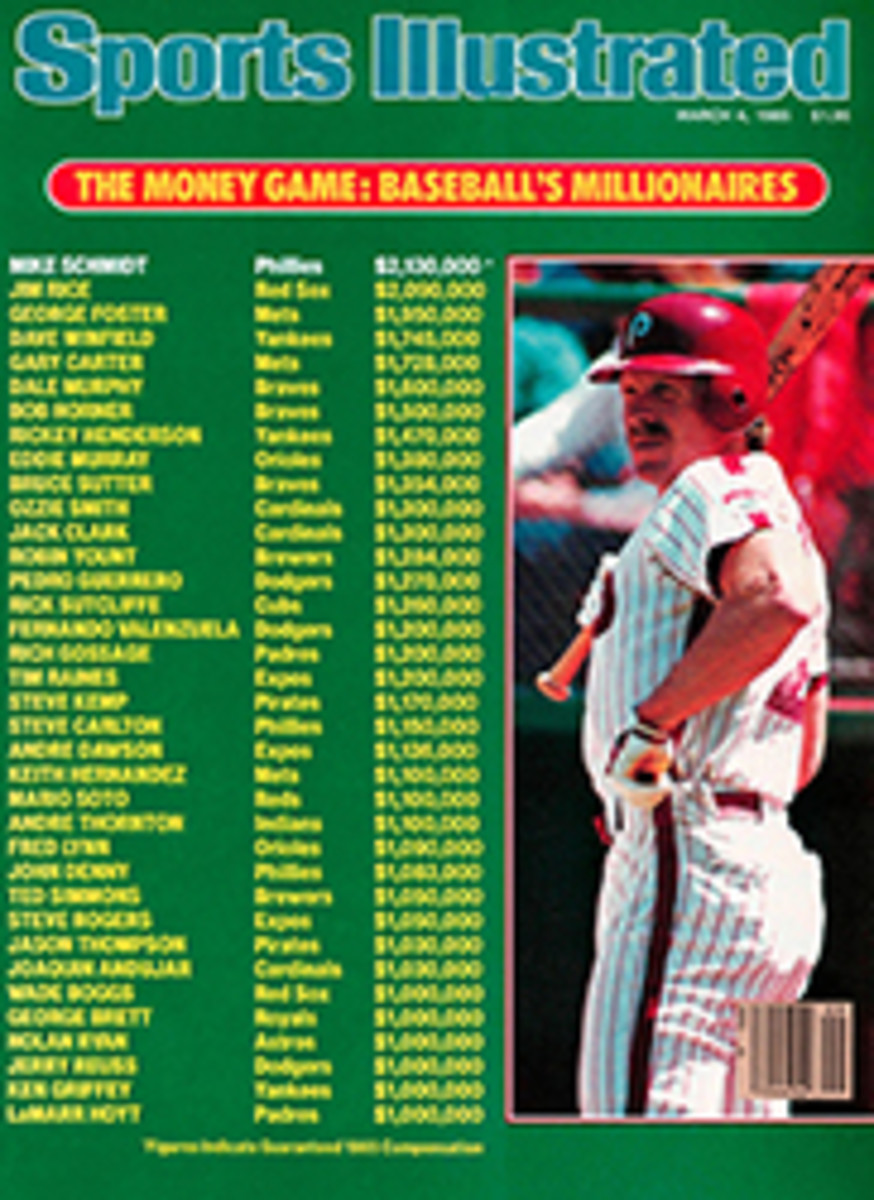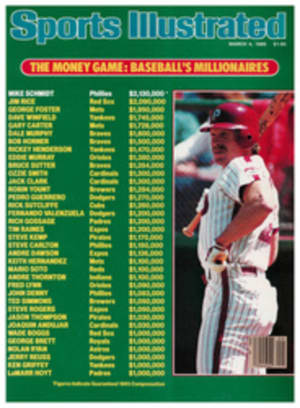
SCORECARD
A LAW THAT NEEDS NEW MUSCLE
Last summer, as Cheryl Miller was preparing to lead the U.S. Olympic women's basketball team to the gold medal in Los Angeles, she said, "Without Title IX I wouldn't be here." The reference was to the 1972 federal law that spurred the growth of women's sports by prohibiting sex discrimination in colleges and school systems receiving federal aid. But even as Miller, a star at Southern Cal when not playing for America, was heading for Olympic glory, the law that helped develop her athletic skills lay dormant. It had been effectively scuttled by the U.S. Supreme Court, which ruled on Feb. 28, 1984 that Title IX should be applied more narrowly than it had been. This week promoters of women's athletics will mark the first anniversary of the court's decision with a rally in Washington in support of legislation that would put the muscle back into Title IX.
Nobody disputes Title IX's importance in the startling growth of American women's sports in recent years. There were 32,000 females participating in college athletics in 1972, the year the law was enacted; by '83 the total had increased to 150,000. In '72 only 7% of high school athletes were girls; last year that figure was 35%. From 1974 to 1981 the number of colleges granting athletic scholarships to women increased from 60 to 500, while expenditures on women's programs by NCAA schools soared from $4 million to $116 million. This greater commitment to women's athletics resulted in vastly improved performances by females not just in basketball, but also in track and field, swimming and most other sports.
The Supreme Court decision could change all that. The case involved Grove City College, a private, coeducational school in Pennsylvania that as a matter of principle refused to sign a federal form promising compliance with Title IX. The Court ruled 6-3 in favor of Grove City's position that Title IX should be regarded as "program specific"—i.e., it banned sex discrimination in a particular program receiving federal funds but not in the institution as a whole. Thus, if Old Siwash was unfair to women in athletics but afforded them equal opportunity in academic programs, federal funds could be withheld only for athletics. Because little federal funding goes directly to sports programs, schools with discriminatory athletic departments were no longer threatened with loss of aid.
The immediate effect of the Court's ruling was the shelving of 40-odd cases in which the Department of Education's Office for Civil Rights was investigating alleged Title IX violations. At Penn State, which has had a men's varsity soccer team for 74 years, a complaint about the school's refusal to confer varsity status on the women's soccer club died without a whimper. It's worrisome enough that progress has already stopped in such cases. Worse still is the possibility of gains in women's programs being reversed. Having been forced to beef up those programs by Title IX, most schools now claim to be morally committed to parity for women's athletics. But without a strong Title IX to prod them, even the best-intentioned athletic directors may be tempted to deal with future budget crunches by cutting back on women's programs.
One reason cutbacks haven't occurred already is the political uncertainty surrounding Title IX. The Nixon, Ford and Carter administrations all applied Title IX broadly, but the Reagan Administration, while claiming to be a proponent of women's sports, backed Grove City's bid for a narrower interpretation—albeit over the private objections of then Education Secretary T.H. Bell. Notwithstanding the Supreme Court's majority ruling, there's considerable evidence that Congress meant for Title IX to be broadly applied when it passed the law in 1972, and strong bipartisan support now exists in both houses for the proposed Civil Rights Restoration Act of 1985, which would clearly reassert that intention. The legislation's importance is underscored by Bell, who has left Reagan's cabinet to become a professor at the University of Utah and says he's now "free to talk out" on Title IX. Lamenting the stagnation in women's athletics caused by the weakening of that law, Bell says. "You don't go through school again. It's an opportunity lost forever."
—ROBERT SULLIVAN
QUADRUPLE RING CEREMONY
Kirk Gibson and Dave Rozema no longer are teammates—Gibson's still with the Detroit Tigers, while Rozema recently signed with the Texas Rangers as a free agent—but they remain the fastest of hunting and fishing pals (SI, Dec. 10, 1984). They also are fiancés-in-law, or something like that, by dint of the news that next Dec. 21, in a combined ceremony, Gibson will marry JoAnn Sklarski, and Rozema will wed her younger sister, Sandy. Kirk and Dave, says Sandy, thereupon will be "bound together for life."
TRIVIALISTS AT THE BAT
Sports buffs in the Upper Midwest are gearing up for this year's Minnesota Sports Trivia Bowl, the finals of which will be broadcast live this month on radio station WCCO in Minneapolis. In the first such competition, a year ago, more than 200 four-person teams went through 764 questions. A publicist for the event passes along one of them, noting that it stumped the two teams that made the 1984 finals: "According to the poem Casey at the Bat, what was the attendance in Mudville when Casey struck out?"
The answer, our correspondent assures us, is 5,000. As evidence he cites the couplet: "Ten thousand eyes were on him as he rubbed his hands with dirt/Five thousand tongues applauded when he wiped them on his shirt...."
Wait a minute. Are we talking about turnstile attendance or paid attendance, in which no-shows should be included? And of the fans actually on hand, isn't it possible that a few were visiting the rest rooms, the concession stands or the first-aid station at the time the described actions were taking place? And, hey, at such a nerve-racking moment don't you think that maybe some eyes were averted and thus weren't "on" Casey? And isn't it likely that quite a few folks were so choked up by the tension that their tongues weren't applauding?
We'd guess it was around 13,600 paid, with 11,952 actually in the ball park.
THE FIRST RUG
Darned if we didn't miss it. AstroTurf has celebrated its 20th birthday. It was in the fall of 1964 that the first artificial grass surface was installed in the field house of Moses Brown School in Providence. The new carpeting didn't yet have a name—Monsanto came up with the AstroTurf handle when a rug was installed in the Houston Astrodome in 1966—and few could have foreseen how popular it would become. AstroTurf is used on more than 400 athletic fields, indoor and outdoor, and it remains No. 1 among artificial surfaces despite a growing number of competitors and widespread complaints from athletes and fans that the stuff is too hard, too hot and too, well, artificial.
Even Monsanto seems a bit confused about AstroTurf's origins. The company developed it at the urging of the Ford Foundation, which saw simulated grass as a way of providing playing fields for inner-city children, who lagged behind rural and small-town kids in physical-fitness tests. Today a Monsanto spokesman confidently spreads the word that Moses Brown was chosen for the first AstroTurf installation because it's a big-city school populated by "underprivileged" youngsters. Truth is, Moses Brown is a fairly tony prep school with a tuition for boarders of $9,000. It was chosen as the showcase for the new surface because its then headmaster had served on Ford Foundation committees and thus had the inside track with AstroTurf's developers.
That historic first rug, by the way, is still in use. "It's held up pretty well," says Moses Brown athletic director Jerry Zeoli. "One patch where we pole-vault wore out a little bit, but everything else is the original."
DON'T MESS
On the premise that few hockey fans can remember the names of the NHL's conferences and divisions, The Globe and Mail in Toronto has come up with names of its own devising. Whereas the league officially has a Wales Conference consisting of the Patrick and Adams divisions and a Campbell Conference comprised of the Norris and Smythe divisions, The Globe and Mail has for the past couple of months used designations based on geography. The newspaper refers to the Wales as the Eastern Conference and the Campbell as the Western Conference. The Patrick and Adams divisions have been renamed the Atlantic and Northern divisions, respectively. The paper lists the Norris and Smythe divisions as the Central and Pacific divisions, respectively.
"We thought it was silly that nobody can remember what teams play in what divisions," says assistant sports editor Jack McHale. "Even the hockey writers have to stop to think about it. This way at least you can get an idea of what area the teams are from."
Some readers appreciate the newspaper's move, others emphatically don't. In the latter category is Jay Greenberg, a Philadelphia sportswriter who, in a column in The Hockey News, accused The Globe and Mail of being "just a shade arrogant" in messing with the NHL's nomenclature. In making his case, Greenberg asks, "How come The Globe and Mail has two names when just about every other paper has only one?" He concludes, "Sorry, The Globe and Mail is too confusing. From now on I'm going to call it the Gazette."
PHOTO
PETER READ MILLER
Title IX helped set USC's Miller apart from a 1955 forebear.
PHOTO
KEN ALEXANDER/GASTONIA GAZETTE
[See caption above.]
ILLUSTRATION
SAM O. WEISSMAN
THEY SAID IT
•Bob Richards, two-time Olympic pole vault champion and erstwhile spokesman for Wheaties: "I still eat them. A bowl of Wheaties and 10,000 hours of hard work will get you anything you want."
•Jim Bunning, former big league pitcher, noting that he has received a greater number of votes for the Hall of Fame with each passing year: "If this keeps up, I'm going to be a helluva pitcher in a few years."
•Abe Lemons, Oklahoma City University basketball coach, after a game in which his team botched up an alley-oop attempt: "We can alley but we don't have the oop."

